Imagine your new garment business is not gaining as much pace as you expected, both for sales and website traffic. While you are exploring new ways to reach potential customers, you learn about the scope of paid ads and finally realise the gap. However, the million-dollar question that stops you from moving forward is the battle of Google Ads vs Facebook Ads.
While advertising on Facebook vs Google yields similar outcomes, it is not as simple as you think. If you are aware of their differences, all your investments in paid ads may be in vain. This blog aims to clear your vision as you navigate through the maze of paid ad services to give your business a much-needed push. Let’s start with understanding Google and Facebook Ads.
Understanding Google Ads
Google Ads is a powerful tool that drives immediate traffic and sales by reaching out to high-intent audiences who are actively searching for products or services similar to your offerings. In other words, this online advertising platform by Google drives results by placing the right product in front of the right audience when they are highly motivated to make the purchase.
Google Ads operates on a PPC (pay-per-click) model where the advertisers pay only when someone clicks on it or an active interaction occurs. Here, the advertisers bid for the placement of their ads, and the ad budget impacts the rankings. These ads are significantly driven by keywords. The targeting options span the demographics, locations, user behaviour, etc.
These ads are displayed across the wide network of Google. Most of the ads are placed at the top of the Google search engine. Videos and display ads are highlighted on YouTube. Also, there are other channels like Google Display Network, Gmail, Google Maps, and partner sites.
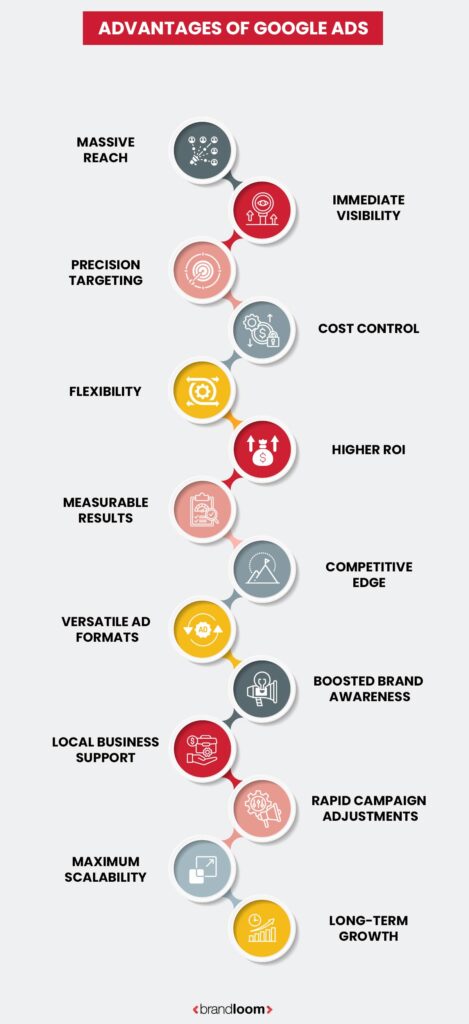
Understanding Facebook Ads
Facebook Ads are focused on building brand awareness and loyalty. These use data-driven campaigns to drive engagement by reaching a hyper-specific target audience. Usually, these campaigns are visually rich, ensuring the brands can bond meaningfully with the right customers. These ads are part of Meta’s advertising platform, which allows businesses to reach potential customers through targeted ads.
Facebook ads span Meta’s ecosystem, which involves Facebook, Messenger, Instagram, and the Audience Network. These ads are curated based on demographics, behaviours, interests, and interactions. The key features include interactive and visually rich creatives, advanced analytics, AI optimization, and flexible budgeting with no minimum spend.
Businesses prefer Facebook ads due to demographic precision, brand awareness, retargeting purposes, and cost-efficiency. The key metrics are engagement, reach, and ROI. Facebook ads also focus on lookalike audiences that are similar to existing customers. This has become widely popular among brands to boost their brand loyalty.
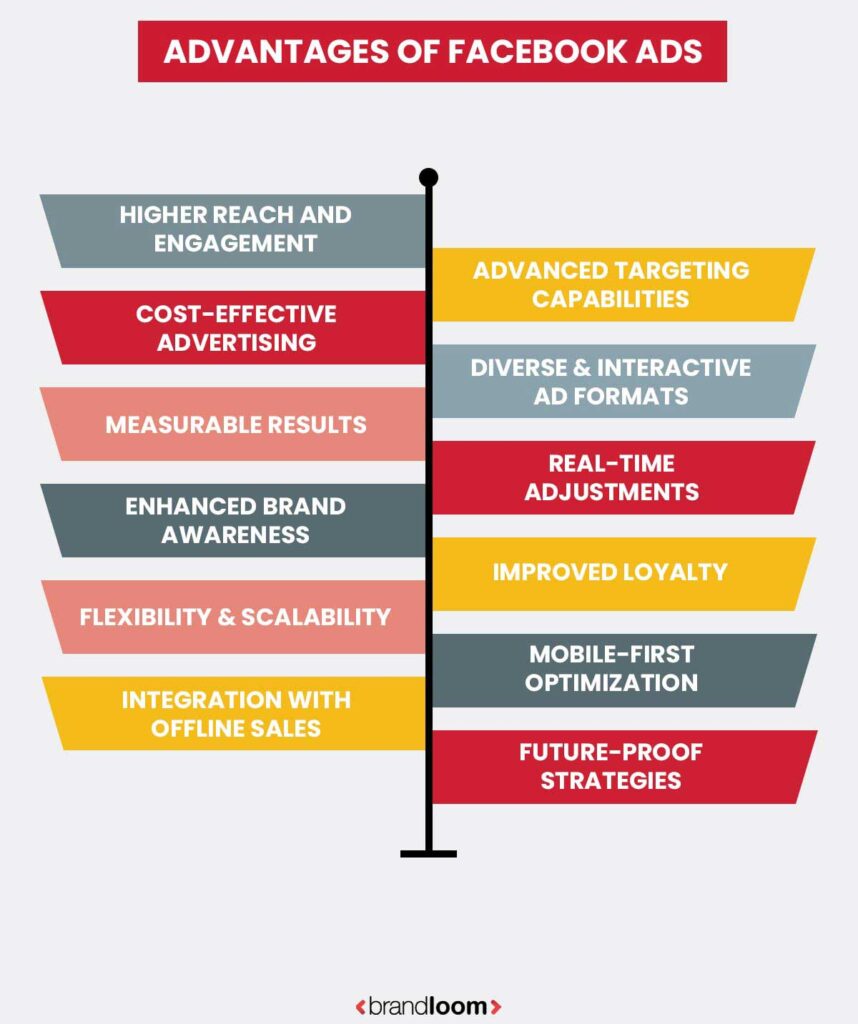
Key Differences – Google Ads Vs Facebook Ads
It is essential to analyze the difference between Facebook Ads and Google Ads.
| Google Ads Vs Facebook Ads | |
|---|---|
| Google Ads | Facebook Ads |
| 1. Targets the audience with high purchase intent. As these people are actively searching to make an immediate purchase, they have higher conversion rates. | 1. Applies interest-based targeting to those with lower to medium conversion rates. |
| 2. Works great to boost overall sales. | 2. Works great to boost brand awareness. |
| 3. Google Ads are comparatively expensive, where the cost is maximum for fields like legal. | 3. Facebook Ads are cost-efficient and ideal for businesses with a low marketing budget. |
| 4. Based on Google platforms. | 4. Based on Meta platforms. |
| 5. Best for immediate results, as the target audience has high intent. | 5. You will gradually see the results, but not as immediately as Google Ads. |
| 6. Google Ads are focused on utility and relevance. | 6. Facebook Ads are focused on visual storytelling. |
| 7. These ads excel in nurturing the existing demand for a product or service. | 7. These ads are perfect for creating new demand for a product or service. |
| 8. Enables higher ROI, if structured and targeted correctly. | 8. ROI is comparatively less than Google Ads, depending on the targeting. |
| 9. Helps to multiply revenue faster by quickly turning leads into sales. | 9. Helps to enhance brand loyalty through higher engagement. |
| 10. Addresses immediate customer needs, therefore better for services like legal, plumbing, or useful products. | 10. Ideal for businesses launching visually attractive products or ones aiming for retargeting campaigns. |
| 11. Focuses on active buyers. | 11. Focuses on passive buyers. |
| 12. The ad formats include text-based search ads, YouTube video ads, shopping ads, Pmax ads, and the display network. | 12. The ad format is inclusive of lead generation, shopping ads, catalogue ads, dynamic product ads, and different visual formats like carousel. |
| 13. Google Ads prioritizes bottom-of-funnel conversions. | 13. Facebook Ads prioritizes top-of-funnel awareness. |
| 14. Higher CPC. | 14. Lower CPC for some industries. However, CPC may vary based on niche, bidding strategy, and industry. |
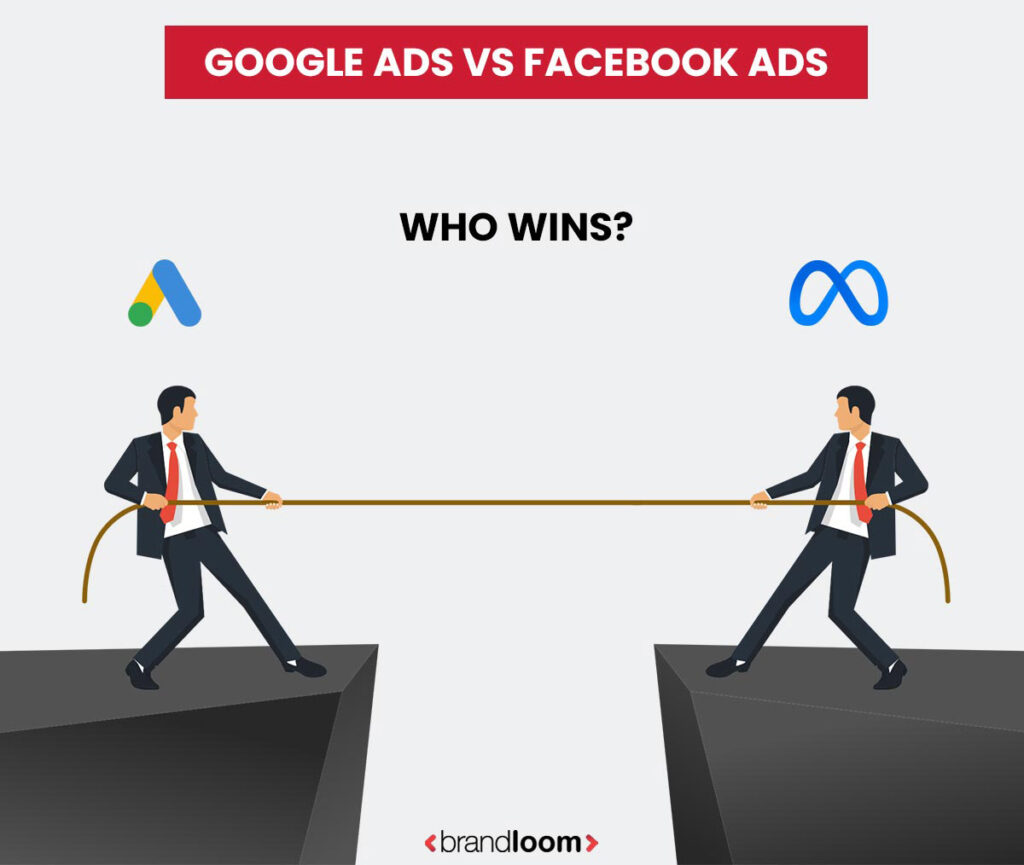
Google Ads For Intent-driven Search
When it comes to intent-driven Google Ads, they match ads to the user intent behind their searches. Here, the approach is to show users the most relevant ads on the basis of their latest queries. This boosts the likelihood of engagement, increasing the conversion rate.
Google AdSense Ad intent is a new format that efficiently places links, chips, etc. within web content. The elements are highly focused on matching the user behaviour and content in a way that the users come across topics that interest them. The intent is significant for Google Ads as it ensures higher conversions, leading to maximized ROI.
Facebook Ads: Interest-based Targeting
Audience interest holds great importance in paid ads, especially Facebook ads. Its interest-based targeting enables advertisers to focus on users based on their interests, hobbies, activities, and preferences. Facebook analyses the activities of the users to determine their choices in placing ads with which they are more likely to engage.
Wide interest categories, audience refinement, and precision are three key features of Facebook ads. Enhanced ad relevance, personalized messaging, cost-effectiveness, and expanded reach are some benefits of these ads. BrandLoom can help your business build brand loyalty with impeccable Facebook ads.
Factors To Consider In Google Ads Vs Facebook Ads
As a new entrepreneur who has no idea about how to promote their business, or an old market player who is finding new, effective ways to expand their business, you are finally stuck at one point. That is Google Ads vs Facebook Ads.
As a business owner, the key challenge is to determine whether you should rely on Google Ads or you should stick to Facebook Ads. In the quest for Google Ads vs Facebook Ads, let us check out some of the key factors to consider before zeroing in on any specific type of Ad.
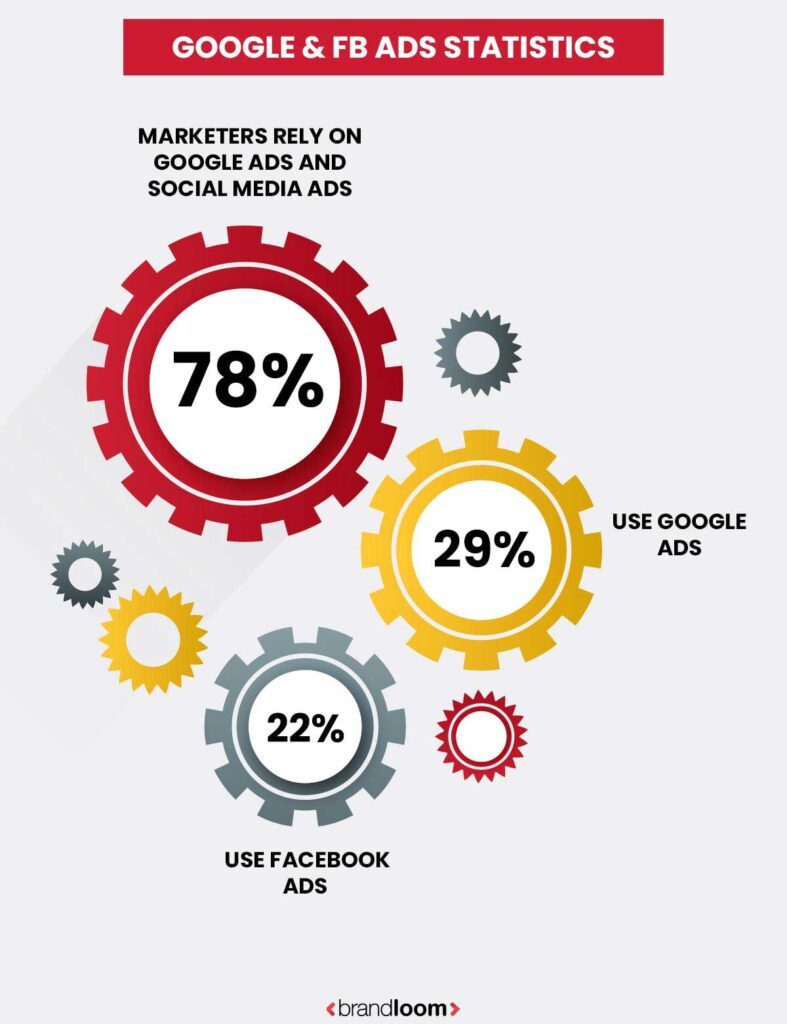
1. Business Goals
If you are looking for immediate sales, it is better to invest in Google Ads. The sales cycle is another key factor, as Google Ads are great for short sales like urgent plumbing requirements.
Meanwhile, Facebook ads are good for longer sales cycles, such as for luxury items. If your business offers visually appealing products, such as garments, it is advisable to use Facebook ads. The products that are linked to search intent should be relied on with Google Ads.
2. Audience & Targeting
If you are focused on targeting active buyers, it is better to go with Google Ads as their target audiences have higher search intent. However, if you are planning to enhance brand loyalty through increased awareness, Facebook Ads is the right choice.
Sometimes, the advertisers rely heavily on audience data to ensure accurate targeting. In such a scenario, Facebook Ads can be ideal as they offer rich behavioural and demographic data for precise targeting. Also, Facebook Ads is most appropriate if you are looking for advanced retargeting.
3. Ad Budget
Google Ads offer a higher cost-per-click (CPC) while Facebook Ads offer a lower CPC. If your timeline is short but the sales target is high, it is better to go with Google Ads. These have higher conversion rates, hence faster ROI.
Google Ads has higher competition for keywords in complex niches like finance, legal, etc. Facebook ads have less competition for niches like fashion and wellness that are comprised of visual aspects.
4. Ad Format
Google Ads are best for accommodating text-based search ads, whereas Facebook Ads help to bring stories to life through carousels, reels, etc. If your creative focus is on relevance and clarity, there is nothing like Google Ads. However, if you prefer visual storytelling, Facebook Ads is the right tool to consider.
5. Industry & Use Cases
The best industries for Google Ads are e-commerce, local services, B2B, and urgent requirements like lawyers. Meanwhile, Facebook Ads work best for industries like fashion, beauty, apps, DTC brands, and event promotion.
The top use cases also differ when you advertise on Facebook and Google. For example, emergency services, product searches, and high-intent keywords are for Google Ads, while new product launch, retargeting campaigns, and building communities are for Facebook Ads.
6. Technical Considerations
Google Ads integrates with Google Analytics, CRM tools, and the search console to track the results. In the meantime, the algorithm learning process plays a key role in determining which one to choose. Google ads require keyword research and bid optimization, whereas Facebook ads require audience testing and creative A/B testing in this context.
Advanced Strategies For Google Ads
Gone are those days when businesses relied on a high marketing budget to multiply their profits. These are some advanced strategies to consider to maximize ROI and rise above the highly competitive market.
- Optimizing Ad Copies & Landing Pages: Ad copy is a key factor that determines whether the audience will visit your site or not. A copy with a compelling and clear headline can work wonders in attracting potential customers. Once they click on the ad, they are redirected to the landing page. This is the space where the visitors turn into paying customers. Loading speed and clear CTA buttons are a must. Also, optimizing your landing page using fresh content, quality visuals, and relevant keywords is crucial.
- Audience-First Strategies: Buyer journey segmentation is a crucial aspect of the audience-first strategy. Here, the campaigns are created on the basis of awareness, decision stages, and consideration. Hyper-personalization can enable the ads to reach the target segments based on their unique behavioral traits, such as cart abandoners.
- Privacy-centric Tracking: Server-side tracking by replacement of third-party cookies is a key method to avoid ad blockers and improve compliance. Multi-channel attribution is crucial for tracking cross-platform journeys. Data-driven models help in accurate credit allocation.
- Advanced Creative & Format Innovations: Immersive ad formats, such as AR/3D ads, video ads, etc., help to boost overall efficiency. Dynamic assets, such as automatic headline, image, and description generation, help identify the top performers. Local inventory ads help attract local buyers through the ‘Pick up later’ option.
- Structural & Technical Practices: The best practices, like single-theme ad groups (STAGs), exact/ phrase match dominance, and negative keyword exclusions, are highly beneficial for improving quality scores and safeguarding brand integrity.
Google Ads For B2B & B2C
For B2B
- Google Ads targets businesses, sometimes involving several stakeholders and lengthier sales cycles. The primary goal is to maximize ROI and solve business pain points.
- As for keyword strategy, these ads focus on long-tail keywords with high intent. It helps to attract the niche audience.
- Value proposition is the core of the messaging in Google ad copies. It includes clear CTAs and a professional tone. Ad extensions are used for maximum credibility.
- The campaign structure for Google Ads is based on funnel stages or themes. Single Keyword Ad Groups (SKAGs) are used for precision. Niche competition increases the likelihood of a higher CPC.
- Google Ads that direct the viewers to a detailed landing page, including an ROI calculator, case studies, and clear CTAs, will help with trust-building. The inclusion of a lead capture form can add more value.
- Tailored Google Ads can help retarget warm leads. CRM integration allows for monitoring the sales cycle and tracking CPL (cost-per-lead).
For B2C
- Google Ads targets customers who are actively searching for a service or product out of urgency or driven by emotions. Sales cycles are shorter in this context.
- As for keyword strategy, broad match keywords are used to expand reach. Emotional triggers like ‘limited stock’ are incorporated to drive results.
- The messaging in the ad copy emphasizes emotional appeal. Also, the CTAs aim for prompt actions with words like ‘now’ in them.
- The ad campaign structure revolves around product promotions or categories. Dynamic search ads are helpful for auto-targeting recent popular queries.
- Ads must be optimized for fast conversions that include limited text, simple layouts, and clear CTA buttons.
- With dynamic retargeting to highlight customized recommendations and abandoned cart items, there will be higher conversion rates.
Advanced Strategies For Facebook Ads
When you are working with Facebook Ads, additional focus on the following aspects can enhance the overall advertising outcomes. Let us explore some advanced strategies to implement.
- Advanced Audience Targeting: Facebook ads can work better with the winning combination of predictive audiences, micro-segmentation, first-party data, and lookalike exclusions. The exclusion lookalikes feature helps to prevent targeting users who are already aware of the brand, ensuring efficient investment of your funds.
- Creative Ad Format Innovations: Different strategies, such as dynamic creative (DCO), vertical video ads, interactive polls & quizzes, UGC-driven ads, and AR/VR ads, help to enhance the ad performance. For instance, AI integration enables advertisers to mix headlines, descriptions, etc., to find the winning combination for catalogue ads.
- Campaign Structuring & Budget Allocation: CBO (Campaign budget optimization) mastery analyzes multiple Facebook ad sets to determine the top-performing ones for accurate budget allocation. Automated Expanded Matching (AEM) testing allows Facebook to expand the primary target audience. With dayparting, Facebook ads can be scheduled during peak engagement hours.
- Measurement & Attribution: Strategies like conversions API, incrementality testing, multi-touch attribution, LTV optimization, etc., help to improve performance. The LTV optimization targets high-repeat buyers for maximized returns.
- Retention & Upselling: Loyalty retargeting optimizes the Facebook ads so that audiences with a 2+ purchase history are targeted with VIP discounts. Post-purchase ads help to upsell complementary products. With subscription nudges, lead ads are used to promote subscription plans.
Facebook Ads For B2B & B2C
For B2B
- The target audience for these type of Facebook Ads is entrepreneurs or the decision-maker of a business. It highlights the expected business outcomes.
- The ad objectives include brand awareness, lead generation, demo requests, content downloads, and focusing on mid-funnel prospects.
- Content strategy includes educational resources and ROI-centred messaging, whereas the metrics are CPL (cost per lead), sales cycle length, and lead quality.
- Lookalike audiences is an effective way to reach potential clients who are similar to the existing customers of a business.
For B2C
- The target audience for these Ads are end users or the individual consumers. It highlights the urgency to drive sales.
- The ad objectives revolve around direct sales, product or service promotions, brand awareness, highlighting seasonal offers, and instant conversions.
- Content strategy revolves around visual storytelling, lifestyle-oriented content, and discounts. Meanwhile, the metrics include ROAS, CTR, and conversion rates.
- Short videos like reels help to drive engagement while carousel ads is a great way to highlight multiple products in a single post.
Paid Ad Trends this year
The paid ads are now smarter, more appealing, and harder to ignore. With the digital advertising industry revamped by the new waves of online ads, paying attention to the paid ad trends in 2025 is important.
- AI integration is one of the core aspects behind successful ads now. As the platforms utilize artificial intelligence for bidding strategies, real-time optimization, etc., it is slowly changing the way paid ads used to work. With automation reducing manual control, the advertisers are made to align with this flow and rely on third-party tools for ad insights.
- With technological advancements, paid ads are slowly shifting their focus from traditional keyword targeting. Pmax ad campaigns are becoming popular as advertisers have understood the importance of context-based ads in today’s time.
- Video ads have become a new sensation as viewers prefer short, comprehensive videos that give them a brief idea of the product or service they are looking at. New-age customers may be drawn towards Instagram reels or YouTube shorts rather than a full-fledged video. Therefore, the video length that will go with the ad matters for engagement purposes.
- With a rising inclination towards image and voice searches, paid ad formats are being heavily influenced. This shifting trend in search behaviour is reshaping the paid ad landscape. Advertisers must navigate their way to match this changing pattern, which can have a groundbreaking impact on PPC.
Attribution Models: Who Deserves the Credit?
With various ads running on different platforms, assessing which ad was the final driver behind the customer’s buying decision becomes difficult. Especially with the debate on Google ads vs Facebook ads going on for a long time, it is high time we determine what exactly drove the sales. The attribution models are mainly useful for deciding the influencing factor behind the cross-platform buyers who come across an ad on one platform and later search for the same on another. In such a scenario, it becomes difficult to choose one winner.
Google Ads has plenty of attribution models to highlight final steps in a customer journey.
- First click: All credit goes to the first ad clicked.
- Last click: All credit goes to the last ad clicked. It is the default setting in most systems.
- Time decay: More credit to the interactions closer to conversion.
- Linear: Equal credit to all touchpoints.
- Position-based: 40% credit to first and last click, each with 20% split among the middle clicks.
- Data-Driven Attribution (DDA): Credit is assigned on the basis of the real conversion data.
As for Facebook ads, they rely on click-through and view-through attribution. Attribution settings are meant for highlighting the performance level of Google Ads.
- 7-Day Click: These are the users who click on the ad but make a purchase after a week or so. Hence, this credits the delayed conversions.
- 1-Day Engaged View: Gives credit when a user watches a video for longer (more than just a glimpse) and purchases in the next 24 hours.
- 1-Day View: Credits the users who come across an ad, but do not click. Still, they remember it and return after a day to make the purchase.
Video Ad Performance For Google Ads Vs Facebook Ads
With video ads climbing the popularity ladder, more businesses are showing interest in these ads. Before concluding anything, it is important to understand how video ads perform differently on two major ad platforms, Google and Facebook. However, it is crucial to note that Google Ads basically runs on YouTube.
Google ads on YouTube mostly reach users with high purchase intent. These users actively search for the product or service and are ready to purchase immediately. Hence, they actively look for content that provides comprehensive data on a product or service. It is evident that a video will contain more information than an image, which will benefit those who are seeking immediate results from their search. The performance metrics include views, impressions, playtime, view rate, and average CPV (cost per view).
In Facebook Ads, users mostly view content passively for awareness. For instance, when you scroll through Facebook at your leisure, your buying motivation is low. However, if you come across an informative video, you save it for later. Hence, its performance metrics focus on higher reach and engagement.
With Google video ads, the advertiser gets detailed analytics which enables them to optimize the ads’ status defending on increase or decline of the reach. As Facebook ads is more focused on awareness and trust building, the advertisers can use it as a tool to create a buzz around a product or service. Google video ads is more likely to drive a higher search activity.
How can I optimize my ad budget for maximum ROI on both platforms?
Budget is one of the key aspects determining an ad’s fate. However, if you manage it well, it can work great for your campaign. Let us learn about some key methods to optimize ad budgets for maximum returns on Google Ads and Facebook Ads.
| Strategy | On Google | On Facebook |
| 1. Audience targeting | Utilization of Google’s audience targeting options to reach users with high search intent. | Setting proper demographics and interest columns so that the ads reach the target audience accordingly. |
| 2. Bidding strategies | Optimize bids with Target ROAS or Target CPA for conversions. | Cost Cap or Lowest Cost are bidding platforms by Meta for bid optimization. |
| 3. Budget allocation | Fixed based on campaign performance metrics. | The budget is distributed among ads to ensure the high-performing ones do not run out of credit. |
| 4. A/B Testing | Conduct tests on headlines, ad copy, and landing pages to find out the combination that works best. | Conduct tests on various ad formats, creatives, and messaging to determine the best combination. |
Google Ads Vs Facebook Ads: Which One To Consider?
In the debate of Google ads vs Facebook ads, no specific answer can be considered correct. Rather, the answer is greatly associated with one’s unique needs. In other words, every brand has unique requirements. Some focus on increasing brand awareness, while some solely eye sales maximization. Hence, one must choose the platform based on their requirements.
If you require the services at once, then Google Ads is the right choice. For instance, your target audience is actively looking for plumbing services in your area. So when they come across your ad on Google, they are very likely to transform into buyers., solving their immediate challenges.
At times, the audience has a higher ad budget and is willing for competitive keyword optimization. In such cases, Google Ads can be the ideal choice. However, if you are looking forward to running retargeting campaigns, you may rely on Facebook ads. In the meantime, go with Google Ads if you are more focused on quickly maximizing ROI.
If you are a fashion brand and plan to launch your products most conveniently, Facebook ads are ideal for you. The visually rich aspects enable the ads to attract the target audience and create brand awareness to boost engagement. However, if your brand does not offer anything to be explicitly shown, Google ads can work fine.
Integrating Google and Facebook Ads For Maximum Impact
While the business owners are struggling with Google Ads vs Facebook Ads, it is important to understand that these marketing tools have unique features that benefit the brands. From increased brand awareness to immediate results, these two types of ads can enable remarkable outcomes for your business. Therefore, it is essential to learn how to combine these two advertising tools to ensure the best outcome.
- Google Ads and Facebook Ads can work together to formulate a full-funnel marketing strategy. While Facebook ads will support in creating brand awareness for top-of-funnel activities, the Google ads will attract the active shoppers as part of mid to bottom-of-funnel activities. A new product can be introduced with Facebook ads, and when the customers search for it, Google ads can turn them into sales.
- Cross-platform retargeting helps to complete the sales cycle and allows potential buyers to make the most of their investment. For instance, once a target customer clicks through a Google ad but does not complete the purchase and leaves, the Meta platform retargets them. They come across Facebook ads for the same product, which helps to convert them into buyers.
- Facebook lookalike audiences can be used along with keyword synergy based on the performance data. As Facebook ads maximize the reach of the brand, Google ads capture demand as soon as individuals start looking for their offerings.
- Shared data in both platforms can enhance precision, thereby improving the outcomes. For instance, you can use the top keywords in Google in the Facebook posts to expand the reach and boost ad performance.
All the above-mentioned factors can boost your brand’s growth by refining its targeting and expanding its reach. BrandLoom can provide you with the best strategies to make the most of your ad budget.
Frequently Asked Questions
Google Ads appeals to the audience who is actively seeking a product or service and can immediately convert. Facebook ads can be effective in another niche by creating visually appealing ads to increase awareness. As for Google Ads vs Facebook Ads in terms of user targeting, there is one major difference. While Google Ads are shown to users conducting intent-based searches, Facebook Ads are displayed to audiences conducting interest-based searches.
Google ads focus on the keywords that are used by people while they look for the nearest services or their desired products. As it focuses on search intent, the conversions are more prompt. Facebook ads target their audience based on set behaviors, demographics, and interests. These focus more on the discovery and creation of the demand gap. BrandLoom’s paid ad experts can closely audit your brand and propose the ideal strategy that taps into the emotions of your target audience.
When it comes to Google ads vs Facebook ads, there is no accurate answer. The choice may vary from business to business, depending on their customer segment, business objectives, and the nature of their service or product. Google ads target active buyers searching for a product or service, intending to pay for it at once. Meanwhile, Facebook ads target passive buyers to increase brand awareness by making them more curious about their product or service.
For FB ads, repeated exposure is required mostly before the audience turns into paying customers. However, Google ads, if executed correctly, have the potential to turn leads into clients effortlessly. It may have higher conversion rates in a shorter time than Facebook ads. Therefore, Google ads are better if you want quick results, like higher sales within a shorter time. BrandLoom’s paid ads team can create the best action plan for your business.
As for the 2025 updates, Google remains the dominant player in the paid ad market. While Facebook ads have shown a slight decline in performance, Google ads continue to capture audience attention and deliver higher ROI. However, not every time do forecasts work; your timing matters. The answer to Google ads vs Facebook ads depends on the industry your business operates in. This also takes into account your business goals. So, if you are not looking for immediate conversions and prefer to reach an audience who shares similar interests, Facebook ads are for you.
Facebook ads demonstrate progress in interest-based targeting, focusing on brand awareness. If your brand offers visually appealing products, Facebook ads can work wonders. High-quality pictures showcasing your product, along with engaging ad copies – all that you need to make your target market aware of your brand’s presence. As they come across the images, they will be sufficiently fascinated to open the ad and visit the landing page it links to. If you’re a new brand looking to establish your online presence, these ads can work well.
Small businesses operate with a lower marketing budget compared to the big firms. Hence, mostly they opt for Facebook ads. If you are a new brand in the block or a seasoned brand looking forward to building awareness across the digital channels, you should go with Meta ads. Besides reaching the targeted audience as set by the ad, they can create demand for your product by identifying customer pain points. This helps boost revenue once you start pitching your offerings for sale. In this context, you will get maximum ROI.
As for Google Ads, they work great if you offer any service that can be searched for on an emergency basis. For instance, if you offer plumbing or legal services, using Google Ads can maximize your ROI. These ads reach an audience with high search intent, resulting in higher conversion rates. Therefore, small businesses can get better ROI if they choose the right type of ad that aligns with their objectives. Our experts at BrandLoom can help identify suitable ads that will work well for your brand.
There are three stages of a sales funnel, i.e., TOFU, MOFU, and BOFU. Top of Funnel (TOFU) is for awareness and discovery. The Middle of Funnel (MOFU) is for interest and consideration. Bottom of Funnel (BOFU) is for conversion and purchase. Facebook ads work best for TOFU due to its compelling interest-based search. Google Ads is ideal for BOFU as they target audiences with high search intent who are more likely to convert.
As for MOFU, a combination of both Google ads and Facebook ads can be used. While Google ads capture early research intent, Facebook ads are great for retargeting purposes. BrandLoom, one of the leading digital marketing agencies in India, can turn clicks into sales with a structured paid ad strategy.
We often come across the dilemma of Google ads vs Facebook ads. Here, we must understand the unique features of each of these ads to improve their outcomes. If you own a business and want to quickly gain some profits, then you can opt for Google Ads. These ads can help you to maximize your profits by reaching high-intent audiences and turning the leads into paying customers.
However, if you have rolled out a new venture and want to create a buzz around it, nothing works better than Facebook ads. These are one of the key tools to build brand awareness. FB ads focus on interest-based targeting and enable businesses to find leads.
One needs to follow certain steps to calculate the ad spend budget for Facebook.
– Firstly, you can set a revenue goal and the product prices or service costs. These will be your starting numbers.
– Secondly, you have to calculate the required conversions.
– Thirdly, estimate your CPC (cost-per-click) rates.
– Fourthly, you will calculate the required clicks.
– Fifthly, you have to calculate the total ad spend budget.
– Lastly, you set a budget type, either a fixed daily budget or a campaign budget. Facebook Ads Manager lets you optimize the ads and keep adjusting them in between.
Daily and monthly budget calculation is the most efficient way to calculate your regular ad spend. It is essential to decide on an average daily budget. Multiplying it by 30 will result in the monthly budget. Cost per conversion and conversion rate can help determine whether your ad spend budget is up to the mark. The average cost per conversion (CPA) can be found using dividing the average cost-per-click by the conversion rate.
The campaign data, such as clicks, costs, impressions, and SIS metrics, can be analyzed. Tools and calculators can help to measure the gap and allocate the budget accordingly for the most efficient outcomes. This practice boosts your ad’s visibility and enables you to optimize spend for better outcomes. It is advisable to start with an affordable budget and adjust later on based on the ad’s performance. BrandLoom’s paid advertising experts can guide you through this maze for the most efficient outcomes.
While paid ads are taking over the marketing sector, it has become integral to understand which one is relevant to your industry. Besides business goals, ads must be chosen based on the industry in which your brand operates. The industries that offer emergency services will always be ideal for Google ads. For example, legal, plumbing, HVAC, insurance, SaaS, healthcare, auto repair, travel booking, etc.
As for the Facebook ads, they work best for discovery-driven purposes. The ideal industries include fashion, home decor, beauty, restaurants, wellness, event management, and B2B subscription boxes. There are certain industries that need a strategic mix of both types of ads to succeed. For example, eCommerce, real estate, education, home services, and automotive. BrandLoom can give you maximized ROI with its efficient paid marketing services.
When it comes to Google ads, they are highly efficient if they are used correctly. These ads work great to boost sales in a shorter time frame. Hence, if you are looking for immediate results, Google Ads is for you. If you are providing services that are usually sought on an emergency basis, Google Ads is the right platform to look at. From plumbing to legal assistance, these ads cover everything.
Google Ads is a cornerstone in digital marketing for its winning combination of speed, scalability, and precision. A wise investment is a must if you want to see your ad score high with flying colors. These ads can give you faster and higher ROI. BrandLoom can help your business grow with well-integrated Google Ads.

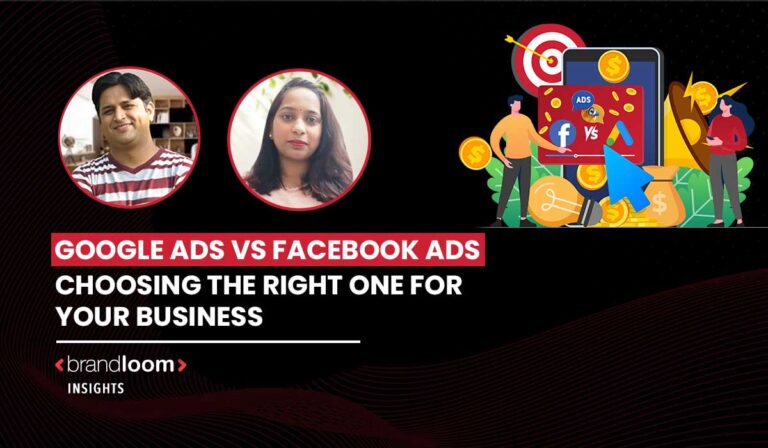
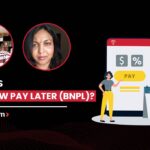
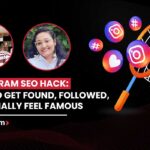
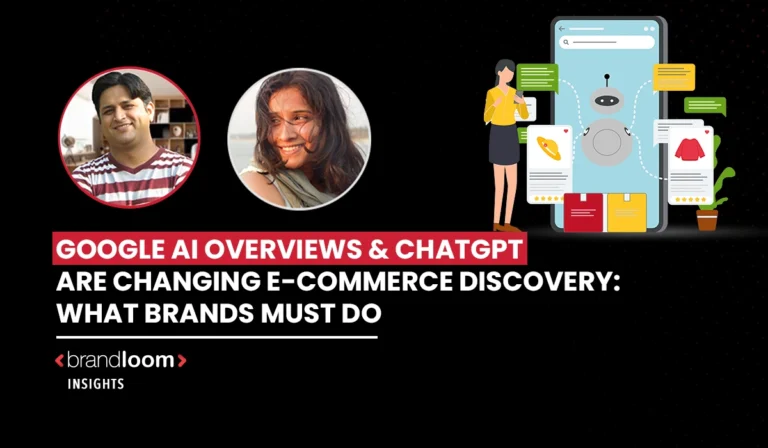
Comments are closed.